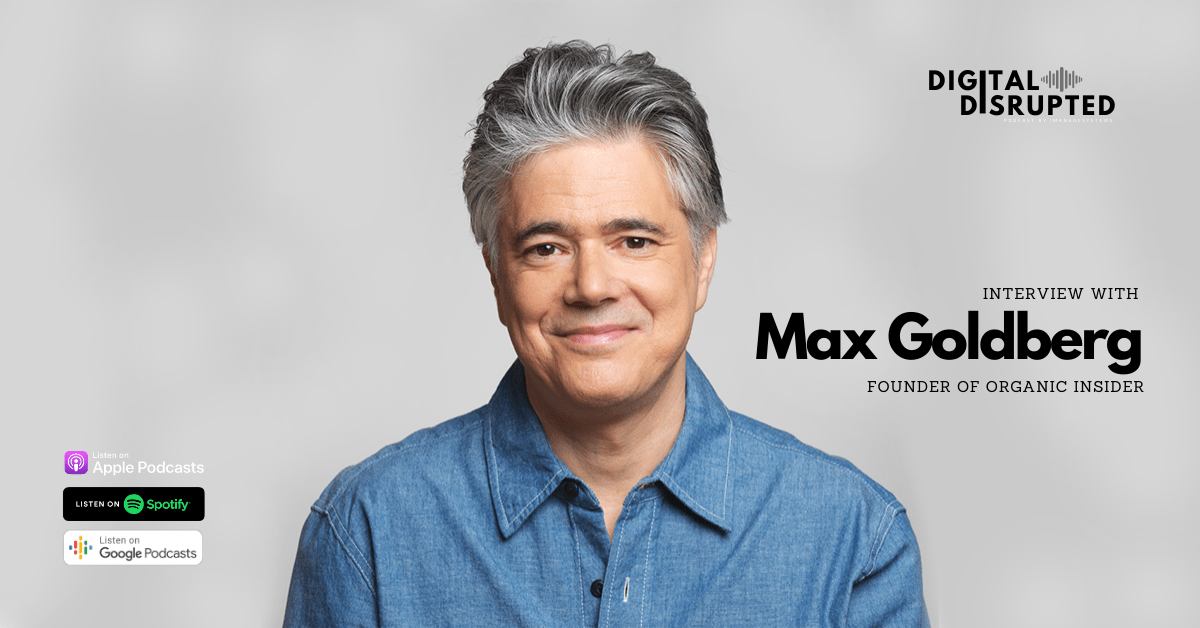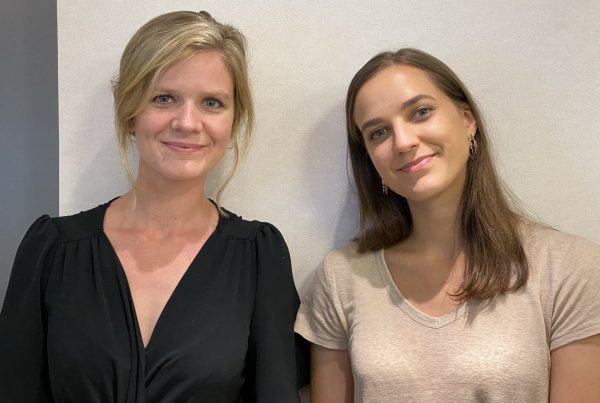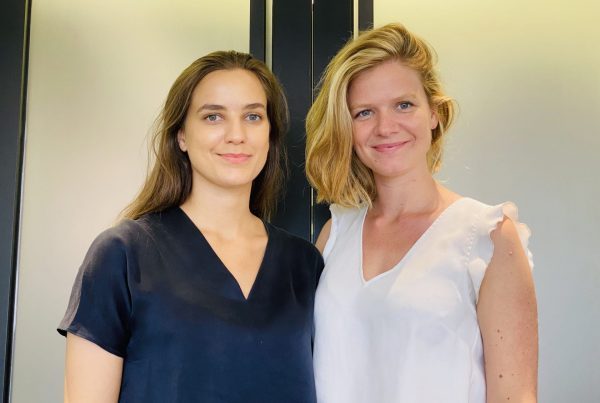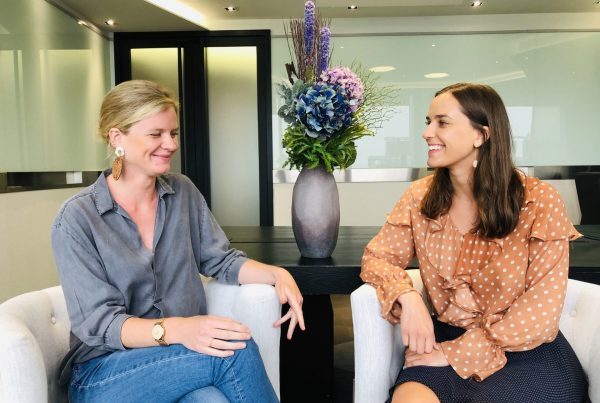Highlights
“it’s a point of frustration and it’s also an opportunity meaning we can educate people more about what organic means”
- The current state of the US organic market and key differences with China;
- The impact of COVID-19 on consumer trends in the health and wellness space; and
- How organic brands can future-proof their strategies to stay relevant.
Episode Transcript
Manuela
You’re listening to digital disrupted from IMS, the podcast series that looks at how the next Digital Trends are impacting you.
In today’s episode of digital disrupted, we will be discussing the organic wellness and health industries in the US. Organic food sales have experienced incredible growth in the last decade from 22. 5 billion USD in sales in 2009, to a staggering 50 billion USD just a decade later. With the recent COVID-19 pandemic outbreak and heightened levels of uncertainty looming over brands both globally and in the US, health and wellness are becoming more crucial than ever.
Celeste
Organic Trade Association CEO Laura Bhatia said organic produce sales were up by more than 20% this spring. The increasing shift of consumer interests towards nutrition, sanitation and moreover, healthier lifestyles and food choices has undoubtedly led to a spike in both short term and long term demands for organic products.
Manuela
To cover this topic and more, we are honored and delighted to be joined by founder and editor of Organic Insider, Max Goldberg. Max Goldberg has been called an “organic sensation” by the New York Times and is named as one of the nation’s leading organic food experts by Shape magazine. Organic Insider is a weekly newsletter read by many of the most influential CEOs in the organic industry today. Max Goldberg also runs the organic food blog Living Maxwell and the organic food industry group on LinkedIn, which counts more than 23,000 members from around the world.
Manuela
Hi, Max, thank you so much for joining us today.
Max Goldberg
Oh, great to be here. And thanks for having me. Thank you.
Manuela
It’s a pleasure to have you on and you’ve had a fascinating personal history with organic products that has impacted your journey. Can you tell us a bit about how it all started and how your own experiences shaped your path to becoming such a renowned voice in the organic space?
Max Goldberg
Well, I started eating organic. I’ve been eating close to 100% organic since 2001. Someone told me about organic. I always thought we needed the chemicals to kill the bugs. And this naturopath said no, we don’t need the chemicals to kill the bugs and that the chemicals can cause us a lot of harm. And ever since that day, I went home I started doing research, and since that moment, I’ve been eating primarily organic for the last 19 years. Since then, I had been looking to do something in the organic industry, but nothing really came of it. And then, at the end of 2009, I went to one of the big organic trade shows which was very close to where I was living at the time (Boston) and the light bulb went off. I just knew at that moment this is what I wanted to be doing with my life. So, I put up an organic food blog called Living Maxwell. I just started writing about the industry and going to all the trade shows. This was at the beginning of 2010 in New York City. I would show up everywhere, go to every event and got very involved in the industry. When I got involved in the industry, or when I started eating organic food, it was very much because I didn’t want to put toxic chemicals into my body. But as I got more involved, it took on a greater meaning of what was going on with GMOs.
These big chemical and pesticide companies were lobbying and influencing politicians in Washington DC. So, I became much more of an activist in the movement. And about three and a half years ago, I started a newsletter called Organic Insider, I also run the organic food industry group on LinkedIn, we have more than 23,000 members. What I used to do is send out a weekly email to the group and then created a standalone product called Organic Insider. This came about because what I found was that a lot of CEOs in the industry didn’t really know what was going on. They were so busy running their businesses that they just really didn’t know what was going on politically or with standards. So I figured if I could put together this newsletter, and if they read it, and it’ll take, you know, maybe 5 to 10 minutes a week to read, they would gain a pretty good understanding of what’s going on in the industry. So that’s kind of my history in the organic space.
Manuela
I can really relate to being so focused on driving the projects that are close to home that we lose sight of the big picture so what a fantastic way to bring that clarity and insight to the industry.
Max Goldberg
Oh, thank you.
Celeste
For the listeners who are new to the organic, natural green space, could you help explain the difference? What these words have in common? One distinction we were discussing earlier with Manuela was: is everything that’s considered green, for example, also sustainable or not?
Max Goldberg
Well, if you take the three big terms here in the US, they don’t really have hard definitions. And that’s the thing about organic is that it’s a term in the US that’s regulated by the government. There are very strict rules about, being able to put the word “organic” on a label. Organic has clear definitions, rules, and enforcement. So that is the big thing that separates this term from natural. People have been throwing the word natural around, and it doesn’t represent anything in terms of strict definitions. And in the US, there has been a lot of class action lawsuits against the big food companies who’ve used the word “natural” on products that contain genetically engineered or genetically modified organisms.
The other big term that comes into play is “non-GMO”. Now organic is non-GMO. But there’s something called the non–GMO project that is very widely embraced in the US. So, what is the difference between organic and non-GMO? There are a few reasons why not everyone knows that organic is non–GMO. The main one is that the USDA does not go out and do testing on high–risk ingredients– things like corn, soy, canola. So, the non–GMO project will go out and do field testing and take additional measures to make sure that there’s no GMO contamination above 0.9%. So, the non–GMO project, is just additional testing. Organic products can be contaminated with GMOs. However, organic inherently means no GMO’s.
Manuela
Has the fact that the organic market is strictly regulated, enabled it to grow as a consumer trend? or How much of it is a buzz around natural or clean eating. Is it just pure marketing?
Max Goldberg
I think there’s just been a gravitation over the last decades towards healthy eating. There’s been a definite move towards people becoming much more concerned about what they are putting into their bodies. Certainly having, the organic regulations has helped. It’s helped raise awareness. Companies are using the USDA Organic seal and there’s more attention in the sector because of it. On the other hand, many people believe that the government in some ways has not been helping the organic sector. Some people feel that the regulations have been watered down and that the rules are not being enforced. So, I think it’s a double-edged sword.
Celeste
Fascinating. Now let’s go back to what you’re saying about organic versus non–GMO. So doesn’t mean for example, if you are a farmer and you’re organically producing I don’t know, lettuce or tomatoes, but then next to you on the other plots, this other farmer is producing his food with fertilizers which means you plot might get contaminated, would you still be certified organic but then not have that non–GMO label?
Max Goldberg
You know, the issues of contamination are a controversial topic. Generally, they’ll send a certifier out there and he will make a decision about whether you’ll lose your organic seal or not. GMO contamination is a very big issue. And it’s the crux of the argument. Many people in the organic space believe that organic and GMOs cannot coexist. The US government believes that it can. It’s one of the real problems that we have because the GMO crops are so prevalent, that contamination whether it’s of the genetic material or of the pesticides invariably gets into organic and conventional farms.
One of the major problems that we’re having in the US right now is with a chemical called Dicamba. 60 million acres of genetically engineered soybeans are sprayed in the US with this although it has been linked to cancer and many other health ailments. The problem with Dicamba is not only that it drifts when it is sprayed but it is also a very volatile chemical. So, after they spray it, the vapors can go into the atmosphere and spread up to a few miles away. This chemical kills or damages crops and trees and plants of neighboring homes and farms. It’s caused a tremendous amount of problems and lawsuits. And that is the problem of these chemicals and these GMO crops: they just do not stay where they’re supposed to stay, and they contaminate what’s around them.
Manuela
Given that there is so much complexity, I mean that with the example you illustrated, it just goes to show that there are so many different factors and actors at stake. Do you think US consumers are able to cross these differences and use this information to make that purchasing decisions?
Max Goldberg
I think the answer is the education that we’re doing has a long way to go. I think most consumers still do not understand what organic means. When you look at some of the data out there, they still prefer the label “natural”. It carries more weight with them in terms of influencing purchasing decisions at the supermarket.
Manuela
It’s ironic, given the explanation that you gave earlier about how organic is so much more regulated than the natural label.
Max Goldberg
Yes, it’s a point of frustration and it’s also an opportunity meaning we can educate people more about what organic means. That means we could grab more market share. There is still a lot of education to do in terms of what is organic. And then there are all these new certifications coming out soon that will have their own education challenges. I think 80% of the population is buying organic occasionally. So, people are buying it but I the majority don’t really understand what organic means.
Manuela
You’re a very informed organic consumer. for you, what are the most important things that you look for when making these types of purchases?
Max Goldberg
Well, I’m looking for the USDA Organic seal. I see if I can find the USDA Organic seal and the non– GMO project seal, particularly with high–risk products such as corn, soy or canola oil. Potatoes now have become a high-risk ingredient. Some are genetically engineered potatoes so that they don’t brown. So I personally know what the high–risk ingredients are because this is what I study and this is my life. I don’t think a lot of people know what those high-risk ingredients are. They’ll see the non–GMO label slapped on a lot of these ingredients. They’ll see it on seaweed, for example, although there’s no such thing as genetically engineered seaweed yet, there’s a non-GMO label on the packaging. It shows that the non–GMO term can be very much of a marketing term, but it also shows that people don’t know which the genetically engineered crops and which ones are not.
I’m looking for clean ingredients, I’m looking for transparency and also companies that give back that have some, sustainable and environmentally friendly packaging. Companies that give back and are focused on regenerative agriculture as well which is something very new.
Regenerative agriculture is agriculture or crops that have grown in a regenerative manner, which means crops that are grown in a way that regenerates the soil, either through cover crops or no tillage or low tillage. This is a big movement right now. Using agriculture to mitigate climate change and capture carbon from the environment.
Celeste
What you were saying earlier reminds me there was a craze a few years ago about trans-fat. All brands were slapping that term on their packaging. And it was on very random things. People thought I guess; it was healthier to get these products because of the no trans–fat mention. It just goes to show the words themselves don’t mean anything, if you don’t know what goes behind. With regards to that term, and the terms we’ve just discussed earlier, what would you say makes the US organic market stand out versus other markets like China or Europe?
Max Goldberg
We do have our problems with fraud here. But I think there’s an overall trust that the system works, and I think there are many honest players here.
There have been growing issues with fraud from abroad, there have been some issues with just even enforcement of the rules. But I think overall, there’s a level of trust here that the system is working and that most players do abide by the system.
Manuela
I think it’s, it’s such a great illustration because we know that in China, Chinese consumers are wary of product origin authenticity, and they are aware that there has been faults in the past and there has been food scandals in the past and they are actively looking for solutions that help them verify product origin. And actually, this isn’t just a problem specific to the organic industry. It’s also prevalent in the luxury industry, for example, where brands are really focused on trying to prove that their products are authentic. I think that is definitely, you know, an example of how the US market is so much more advanced than the others.
We can’t talk about the state of the organic or health space right now in the US without talking about the impact of COVID-19. How do you think that the COVID crisis will impact or has impacted consumer habits across, choosing organic products or natural products, sustainable products, that kind of lifestyle change?
Max Goldberg
Well, in the beginning of the crisis, we saw there were massive amounts of hoarding, and we did see a huge shift to organic products, and to grass fed organic local meat. So, we saw a huge surge in sales, and we were seeing, you know, a lot of anecdotal evidence of people wanting to eat healthier. I think what happened was that with all the restaurants closing, people started eating at home more, and they started paying more attention to what they were putting into their bodies. I did a story on an organic seed company in Vermont and they said that normally, when someone places an order on their website, that could get it out the same day. And at the time I did the story, they were experiencing a 10-day delay. So, there was huge interest in people ordering seeds and wanting to grow their own food. But interestingly, in the New York Times the other day, they did a story about these big food companies and Oreo cookies and how there’s been a resurgence of these legacy brands that are not known to be healthy. So, it may be that in the beginning of COVID, there was a massive shift towards healthy food and healthier eating. But it could be the case where COVID has taken such an emotional toll that people have reverted to their old way of eating. So, I think it remains to be seen. It’s pretty clear that people who are healthy and eat well have stronger immune systems and are more apt to not succumb to COVID.
Celeste
To bounce off from what you just said, are all organic products healthy?
Max Goldberg
You know, I would say this. If you’re going to eat a cookie, with 20 grams, 30 grams of sugar. Is that healthy? I would say no, it’s not. But if you’re going to eat a cookie and you’re going to eat an organic cookie that’s got all organic ingredients with say the same amount of sugar I would say the organic one is better for you than the non-organic one. But you know, some foods are not healthy for you. I think it really depends on the food. But if you’re going to take an item and one’s organic and one is nonorganic, I would absolutely choose the organic one which will be healthier for you.
Celeste
what do you see next in terms of the organic market? You mentioned earlier one of the upcoming trends was packaging.
Max Goldberg
I think there’s definitely a move towards more sustainable compostable packaging. Without question we’re going there. You know, it’s a very complex issue and we don’t have all the answers yet in terms of packaging solutions, but the very progressive companies are moving towards more compostable, biodegradable packaging solutions. One thing I alluded to earlier another that’s going to be a big trend is regenerative agriculture. We’re seeing it more and more and there’s a new certification. It’s called the “regenerative organic certified”. It was backed by the Rodale Institute, Dr. Bronner’s and Patagonia. The Rodale Institute is a nonprofit organization and its where the organic food movement was started in the US in the 1940s. This organization is certifying farms and brands, where they have to have USDA Organic as the baseline. So, you have to have an organic seal as the baseline, then they add additional requirements on top of that, such as soil health, animal welfare and social justice. Another certification coming out soon is the “real organic project”, and that was primarily started by farmers, who were not happy with the USDA, allowing hydroponics in organic farming.
Manuela
For those listeners who aren’t aware, could you give us a brief introduction to what hydroponics are and how it’s used in growing plants?
Max Goldberg
Hydroponics is growing plants in water without soil. The foundation of organic is all about the soil. And in the organic foods production act it says that farmers have to have a management plan that fosters soil fertility. This is in the statute that was passed by the US Congress. When you’re growing seeds in a bucket of water that has absolutely nothing to do with enhancing soil fertility, nothing, but it allows big corporations to grow tomatoes and berries more efficiently and productively. And they don’t have to deal with potential issues such as fungus in the soil or whatnot. They can control the conditions much easier. But it also creates an unleveled playing field. So, a farmer that’s growing in the soil is going to have a hard time competing against these massive hydroponic operations that are growing in buckets of water. Hydroponics put a lot of these soil-based family farmers out of business.
Celeste
Just to go back, you mentioned the government quite a bit. Would you say that the change in the organic space is driven by the brands, the government? I also saw one of your recent blog posts about the youth driving change.
Max Goldberg
I would say the trends are very consumer driven. So, plant–based is an enormous trend right now as you know, all over the world. So that is a consumer trend. And I would say the push towards more environmental packaging, that’s driven by consumers as well, because consumers are concerned about the amount of plastic we’re consuming and consumers want to support brands that are moving towards more environmentally friendly packaging.
When you’re looking at other things such as these new labels like the regenerative organic certified label, the real organic project label that’s driven much more by industry and farmers, because they want to see changes. Consumers just may not have as much awareness about what is taking place behind the scenes.
Manuela
Okay, so given that we’ve covered evolving consumer trends and change driven by the government, what can brands do to stay ahead in a market which is increasingly competitive and with a consumer which is increasingly discerning?
Max Goldberg
If you’re a new brand, you have to offer something unique and different, I think you really need to stand out. The market has become incredibly competitive. And to just come out with a product that’s copying what everyone else is doing, I just don’t see how you are going to differentiate yourself from the competition there. There’s just too much competition and brands. The brands that are going to succeed are going to continue to really push the envelope and delivering the healthiest, most environmentally friendly products out there. Whether it’s embracing, regenerative organic agriculture or really demonstrating their commitment to farm workers to their wellbeing. It really comes down to very clean ingredients, transparency, sustainable packaging, giving back to the community. And you know, I think that’s what consumers, particularly the millennial consumers want. Also, the product needs to taste good, be healthy, and use ingredients that have real nutrition to them. Ultimately the companies that do that are going to be the ones that are going to be the market leaders.
Manuela
Fantastic. Max, thank you so much for all those fascinating insights on the organic industry and for spending time with us today. For listeners who are looking for more information where can they find you?
Max Goldberg
The best place to find me is to go to Organic Insider and Living Maxwell. They can also find me on Instagram. I run the organic food industry group on LinkedIn. So please join the group there and connect with me on LinkedIn. Thank you so much for having me. I really enjoyed talking about these issues. Organic is not just something I write about, it’s my life. That’s all I eat and everywhere I go when I travel, I’m lways looking for organic food, organic restaurants. For me, it’s about promoting organic and also protecting organic. So, thank you so much for the opportunity of sharing a little bit about the industry. I really appreciate it.
Manuela
Fantastic. It’s been a pleasure having you, Max. Thank you so much.
Thank you for listening to digital disrupted. It’s been a pleasure to be your hosts. You can find more great insights on our website. If you are brand looking to drive a successful strategy in Asia get in touch with us for more information.











